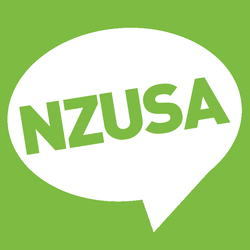Joint Media release > NZUSA & Ako Aotearoa > Wednesday 1 May 2013
Timely Research On Tertiary Student Voice
Through new research released today tertiary education providers around New Zealand will be receiving some firm guidance on ways to improve the ways they draw on and engage with the student voice to enhance quality.
The research – conducted with assistance from a variety of providers – has found that existing pockets of good practice need to be systemised across the entire sector and presents a simple tool for establishing and scaling up engagement with students.
Jointly commissioned by Ako Aotearoa, the National Centre for Tertiary Teaching Excellence, and the NZ Union of Students’ Associations (NZUSA), the research is being launched at the Support for Quality conference being held in Auckland this week by the Academic Quality Agency for NZ Universities.
Ako Aotearoa’s Director, Dr Peter Coolbear, says the research is a timely reminder for tertiary education organisations that the quality of the education they provide is fundamentally intertwined with the direct and representative input of students in a continuous and visible feedback loop.
“A much broader understanding of student voice is needed that includes every step from the everyday educational level to the direction-giving governance level of an organisation,” says Dr Coolbear.
“Up until now the role and resourcing of student representation from the class level up has been a poorly understood aspect of quality systems that should be easier to address thanks to this research.
“A key finding of this research is that the effectiveness of the student voice can’t and shouldn’t rest on the shoulders of isolated students – it has to be seen as a partnership. Above all institutions have to create an on-campus culture that actively shows that the student voice is valued, that students are being heard at all levels, and that actions that respond to the student voice can be seen to be happening”.
NZUSA President Pete Hodkinson says the practice examples highlighted by the research from two private training establishments, four polytechnics, one wānanga and two universities all point to the variety of ways that management, teaching staff and students have been grappling with often complex and not always cohesive aspects of student representation.
“From the student point of view we are heartened by examples which demonstrate that staff and students are working together to achieve changes that enhance the quality of the education and experience delivered to fee-paying students.
“What is also encouraging about this research is that it reinforces the concept that representing the diversity of student voice is about students as a collective whole, rather than as disassociated individuals,” says Hodkinson.
“As a national student body the over-riding attitude we bring to this is best expressed in the phrase ‘nothing about students, without students’. Achieving a balance that sees all students as members of an educational community as well as consumers of education is incredibly important”.
Hodkinson says NZUSA will be working with its members throughout 2013 to apply the reflective questions tool contained in the research so that the performance of their operations and the student-facing operations of tertiary education organisations can be modified and improved.
“I believe this is the beginning of a much larger process of finding new and better ways to embed the student voice in tertiary education. I have a huge amount of good faith in the ability of our members to play their role in putting the research into practice. They have all been adapting to changing circumstances and are already focused on tackling the challenges that lie ahead, such as mobilising even more constructive student engagement of, for and by students”.
ENDS




 International Writers' Workshop NZ Inc: Ōtepoti Poets Top The Kathleen Grattan Prize For A Sequence Of Poems
International Writers' Workshop NZ Inc: Ōtepoti Poets Top The Kathleen Grattan Prize For A Sequence Of Poems NZ Amateur Sport Association: 22 Amendments Proposed For 2022 Act Lodged On 22 November
NZ Amateur Sport Association: 22 Amendments Proposed For 2022 Act Lodged On 22 November Auckland University of Technology: Reading Helps Children Face A Difficult Future
Auckland University of Technology: Reading Helps Children Face A Difficult Future PATHA: Puberty Blocker Evidence Brief Affirms Aotearoa’s Approach
PATHA: Puberty Blocker Evidence Brief Affirms Aotearoa’s Approach Tataki Auckland Unlimited: Into Ocean & Ice - Unveiling Antarctica's Past And Present
Tataki Auckland Unlimited: Into Ocean & Ice - Unveiling Antarctica's Past And Present Health Coalition Aotearoa: Urgent Action Needed To Address Aotearoa’s Shameful Household Food Insecurity
Health Coalition Aotearoa: Urgent Action Needed To Address Aotearoa’s Shameful Household Food Insecurity